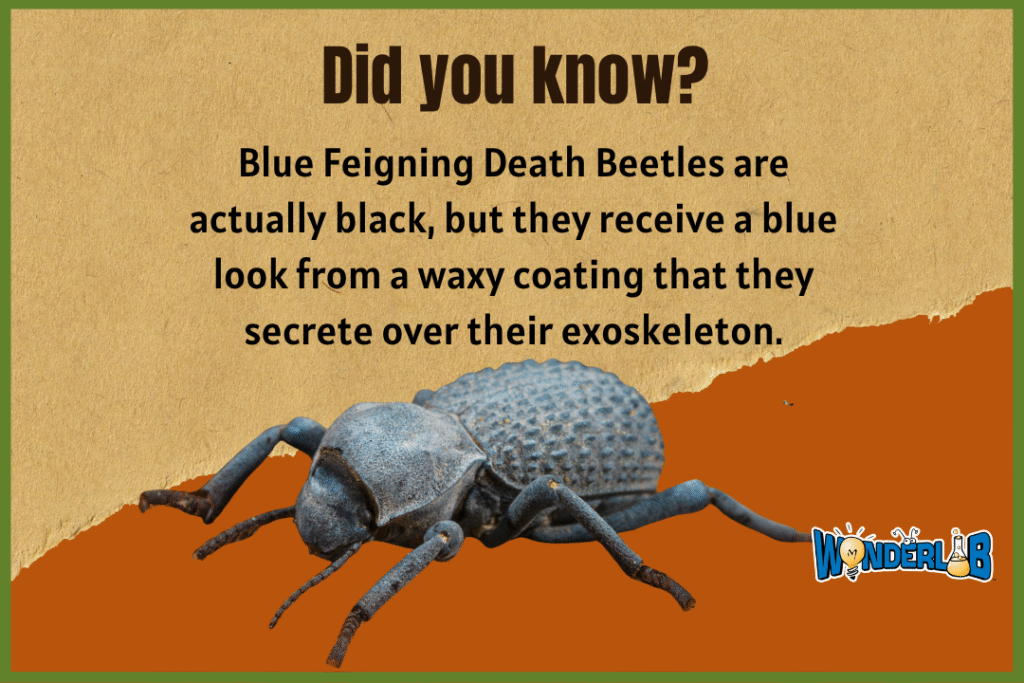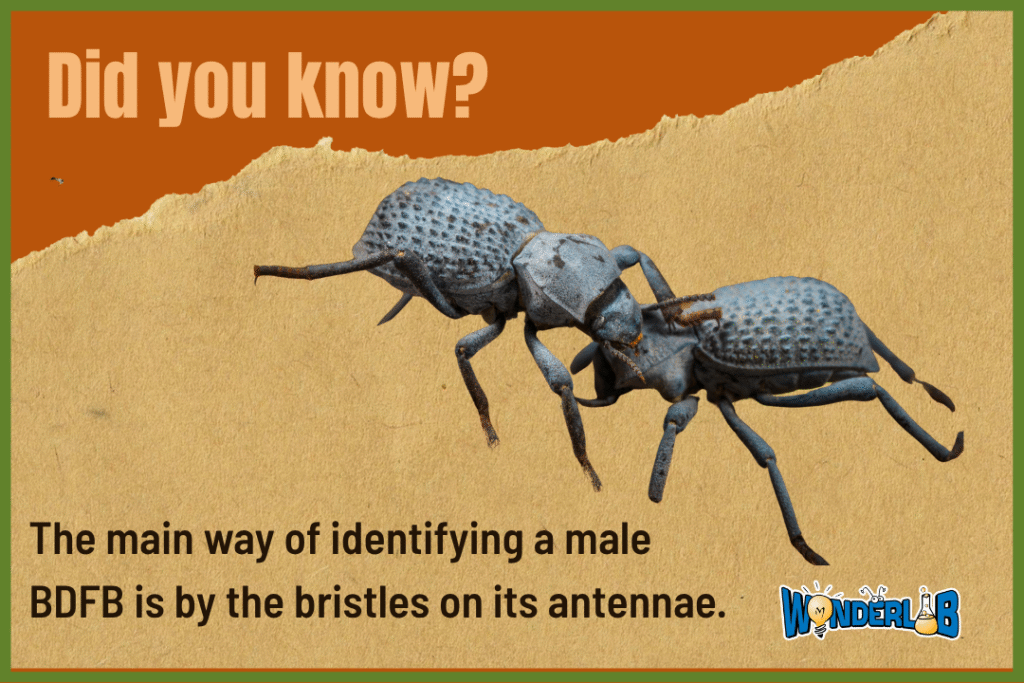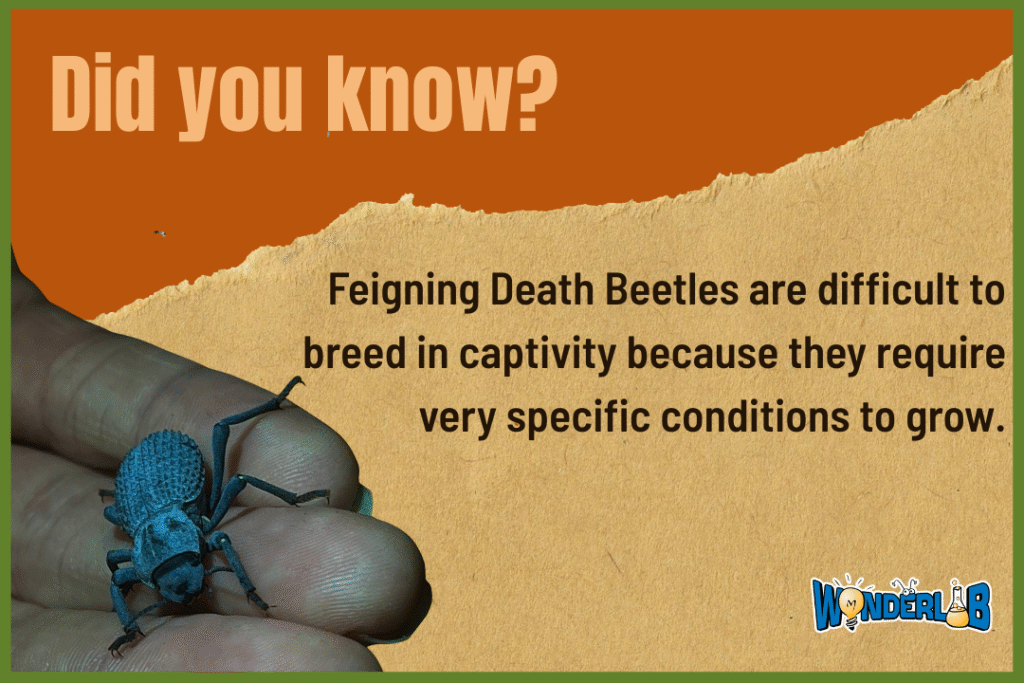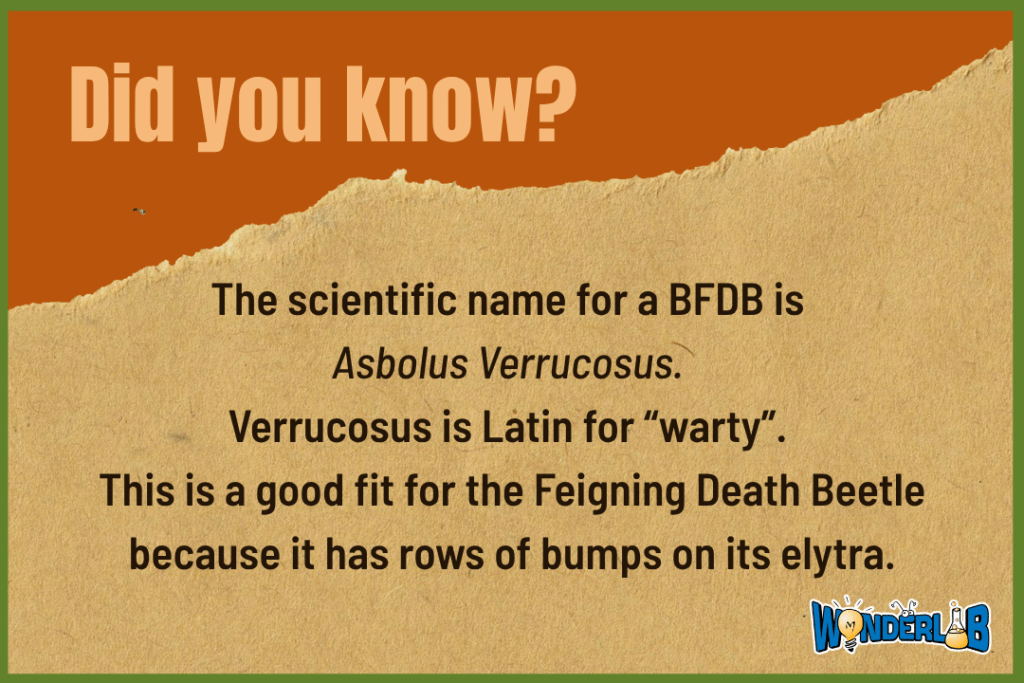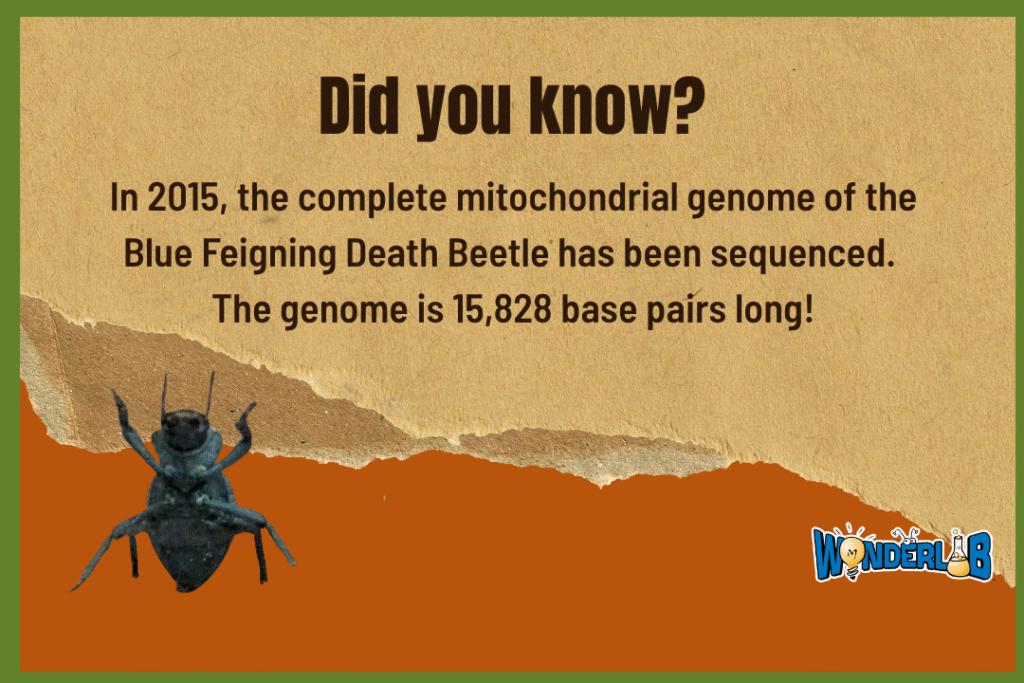Blue Death Feigning Beetles (BDFB) Asbolus verrucosus, are small beetles found in the rocky parts of the Sonoran and Mojave deserts of the Southwestern United States and Northern Mexico. These cute little desert bugs may only be 18―21 mm in length, but when you look closer there is a lot to be said about them. Let’s get into some fun facts about these goobers!
Fun Fact #1: These Beetles Pretend to Die
The beetles feign death when they are scared or startled. To do this, they flip onto their back and become stiff. They feign death until they feel safe, and this can last for hours. Blue Death Feigning Beetles do not have defense mechanisms that help them fight or run away, so like an opossum they freeze/play dead. Natural predators to the beetle, like spiders, prefer live food, so feigning death is a good choice.
Fun Fact #2: They are Black but Appear to be Blue
Blue Death Feigning Beetles are actually black, but they receive a blue look from a waxy coating that they secrete over their exoskeleton. That coating helps them retain water, which is beneficial in the Mojave and Sonoran desert heat where they are native. The drier a habitat is, the bluer the beetles living there will be. Conversely, the more humid a habitat is, the blacker the beetles.
Fun Fact #3: So Many Relatives
Blue Death Feigning Beetles are a part of the family Tenebrionidae (Darkling Beetles). It is one of the largest insect families, with over 20,000 species. They are dark/dull in color, as their name suggests, and typically lack any horns, pincers, or odd-shaped antennae.
Fun Fact #4: Sexual Dimorphism
Sexual dimorphism describes the differences between the sexes of species that aren’t directly related to reproduction. For example, many bird species where the males are colorful and the females are much less colorful. With BDFBs, the males tend to be smaller than the females, but that is not always the case. The main way of identifying a male is by the bristles on its antennae. Males have bigger bristles than females.
Fun Fact #5: These Beetles Can Live a Long Time
Blue Death Feigning Beetles can live up to 17 years in the wild, which is very long compared to other beetles and insects. The reason for this longevity is not fully understood, but they are recognized as hardy bugs because of their hard shell and ability to retain water.
Fun Fact #6: They are Difficult to Breed
Blue Death Feigning Beetles are difficult to breed in exclosures because of the very specific conditions they require to become fully grown. BDFB eggs require a moist cool place to hatch and become larvae. Once the larvae mature, the same conditions that were good for the egg and young larvae will become inhospitable for the mature larvae, so they must be moved to a warmer location to get them to pupate.
Fun Fact #7: BDFBs Undergo Radical Metamorphosis
Holometabola is a superorder of insects characterized by complete metamorphosis. Their life cycle includes distinct larval, pupal, and adult stages. This is often referred to as radical metamorphosis because the changes are so drastic. All beetles are holometabolous, including the Blue Death Feigning Beetle.
Fun Fact #8: They Have the Perfect Scientific Name
Their scientific name is Asbolus verrucosus. Verrucosus is Latin for “warty.” This is a good fit for the BDFB because it has rows of bumps on its elytra. Asbolus is Latin for “sooty” which describes the dark color of the beetle, when it is not blue with wax.
Fun Fact #9: Other Names
The Blue Death Feigning Beetle goes by its scientific name Asbolus verrucosus, but it can also go by Desert Ironclad Beetle, Feigning Death Beetle, or some combination of all those words. “Ironclad” describes their tough fused elytra (hard wing covers).
Fun Fact #10: The Blue Death Feigning Beetle Genome Sequence
In 2015, the complete mitochondrial genome of the Blue Feigning Death Beetle was sequenced. The genome is 15,828 base pairs long. This is the first fully assembled mitogenome sequence for a darkling beetle.
Sources
(2021, Mar 13). Blue Death-Feigning Beetle, The Best Invertebrate? YouTube. Accessed July 1, 2025, https://www.youtube.com/watch?v=6Cnj3WevEOY
Christine Charlson (Sep 25, 2018). Cincinnati Zoo is the first on record to breed the blue feigning-death beetle. 3NewsNow. Accessed June 4, 2025. https://www.3newsnow.com/news/national/cincinnati-zoo-is-the-first-on-record-to-breed-the-blue-feigning-death-beetle
Hartmut Wisch (5 December, 2006). Species Asbolus verrucosus. BugGuide. Accessed June 4, 2025. https://bugguide.net/node/view/89632
N.A. (2012). Blue Death Feigning Beetle – Cincinnati Zoo. YouTube. Accessed June 1, 2025. https://www.youtube.com/watch?v=dqrcwDcPDcc
Jim Hannah (May 6, 2014). Beetle mania: Wright State researcher investigates insect’s secret to long life. Wright State University News Room. Accessed July 11, 2025. https://webapp2.wright.edu/web1/newsroom/2014/05/06/beetle-mania-wright-state-researcher-investigates-insects-secret-to-long-life/#:~:text=Blue%20beetles%2C%20or%20Asbolus%20verrucosus%2C%20can%20live,of%20Death%20Valley%20and%20the%20Mojave%20Desert.
N.A. (N.D.). Darkling Beetles (Tenebrionids). Missouri Department of Conservation. Accessed July 11, 2025. https://mdc.mo.gov/discover-nature/field-guide/darkling-beetles-tenebrionids
Rider, S. D. (2015). The complete mitochondrial genome of the desert darkling beetle Asbolus verrucosus (Coleoptera, Tenebrionidae). Mitochondrial DNA Part A, 27(4), 2447–2449. https://doi.org/10.3109/19401736.2015.1033692
 About the Author
About the Author
Kalen Kpabar is a 3rd-year merchandising student at Indiana University. She works as a marketing intern at WonderLab. She enjoys upcycling clothes and volunteering. In her free time, she loves doing movie marathons and baking!


